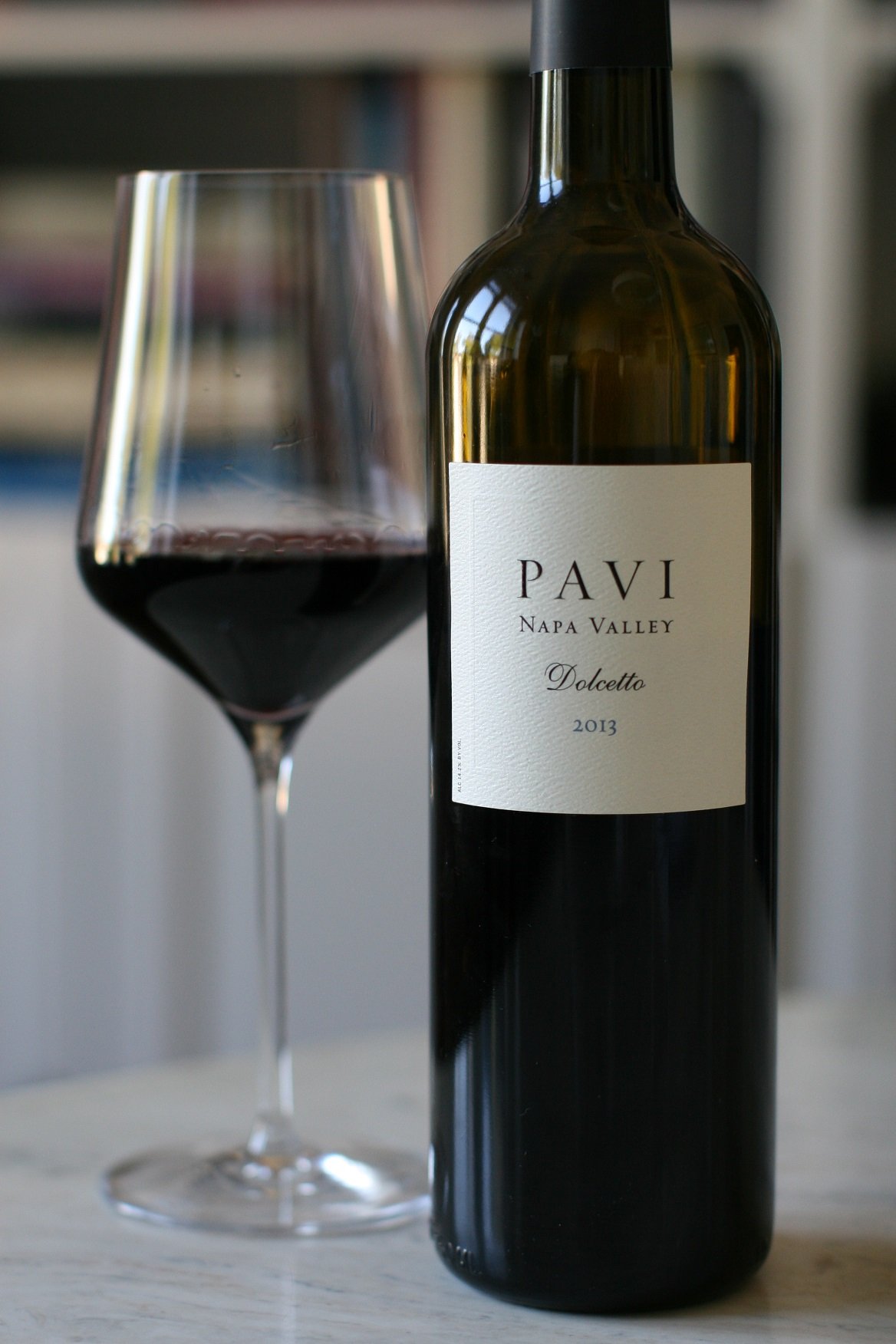
PAVI | Dolcetto 2013
(Napa Valley, California) $30
 Italian wine has taught me not to go looking for Italian varietals anyplace else. (They usually don’t do well). So I was surprised when this lovely dolcetto from the Napa Valleyproved more delicious than a lot of the Italian versions I’ve had recently. It’s important to know that dolcetto is a simple wine (it’s what the Piedmontese often drink with dinner; they save their Barolos and Barbarescos to sell). But the dark, earthy, savory, espresso flavors here are fantastic, and the wine even has a bit of age. Surely mushroom risotto or a pasta Bolognese is in your future. This wine should be too. (14.2% abv)
Italian wine has taught me not to go looking for Italian varietals anyplace else. (They usually don’t do well). So I was surprised when this lovely dolcetto from the Napa Valleyproved more delicious than a lot of the Italian versions I’ve had recently. It’s important to know that dolcetto is a simple wine (it’s what the Piedmontese often drink with dinner; they save their Barolos and Barbarescos to sell). But the dark, earthy, savory, espresso flavors here are fantastic, and the wine even has a bit of age. Surely mushroom risotto or a pasta Bolognese is in your future. This wine should be too. (14.2% abv)
89++ points KM
Available at Pavi Wines

As of this year’s harvest in Italy, the Prosecco DOC laws will be revised to allow for the creation of rosé Prosecco. What grape variety will be used to make “Pink Prosecco” pink?
A. Corvina
B. Pinot Noir
C. Cabernet Franc
D. Sangiovese

Impressive and Infectious
A WineSpeed Book Review
Columbus Day is next week and that reminded us how much we love Italian wine and Italian wine culture. Native Wine Grapes of Italy, a book by Ian D’Agata, celebrates both. In it, D’Agata takes a deep dive into about 500 native Italian grapes, everything from the big players—like Barbera and Nebbiolo—to little-known ones like Biancone and Peverella. D’Agata’s writing is impressive and infectious. By the end of the book, you’ll crave a trip to Tuscany to taste the varieties that, as D’Agata reminds us, you can only truly experience in their native environment. “Ultimately,” D’Agata writes, “wines from native grapes remind us Italians of who we are and where we have come from: their roots dig deep within our collective memories. There is no future without a past.”

Native Wine Grapes of Italy by Ian D’Agata (2014; University of California Press) $50

“Dear Karen—I know that wine in the ancient world was far different from the wine we enjoy today. Could you describe what a typical wine was like in those times?” —Michael M. (Staten Island, NY)
Michael, I don’t think we really know except to surmise that many wines would have been cloudy and sweet, and that they often included other flavors from additives like pine sap, honey, and spices. Some of these foods might have been added to disguise the flavor of wine gone bad, but in other cases the additives were considered beneficial (helpful for digestion, brain health, a stronger constitution and so on). Many wines would also have been a little gritty with solids (skins) and may have been a bit fizzy if they were consumed before fermentation was complete. By the way, it wasn’t only in ancient history that other foods were added to wine. During and following Prohibition in the 1920s, beef broth and salt were added to American wines and doctors gave out prescriptions for these drinks—especially to women.
Send your questions/comments to [email protected].

The steepest vineyards in the world are located in Switzerland.
Answer: False. The steepest vineyards are located in Germany between the villages of Bremm and Eller on the Mosel River. The Calmont vineyard, whose name roughly translates to rocky mountain, was carved by the Mosel more than 400 million years ago, and has been planted with grapes for more than 1500 years. Calmont’s 60- to 70- degree incline makes it look like a vertical wall of vines, all tenaciously gripping the slatey cliff.







